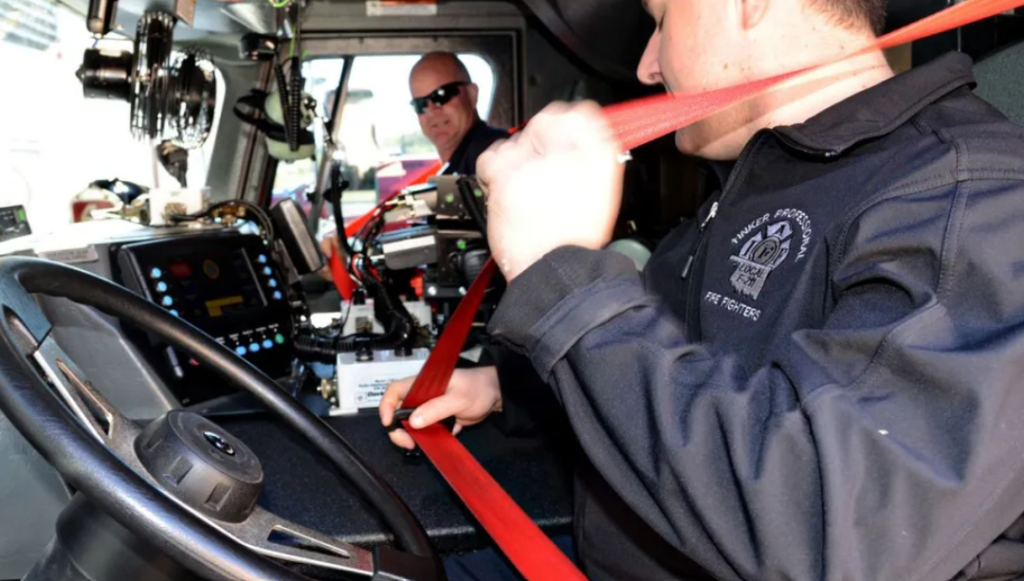By: Robert Avsec, Executive Fire Officer
Military services in the U.S. began using Safety Stand Downs to address operational safety issues when several significant operational issues resulting in death, injury, or negative impact on combat assets (e.g., loss of aircraft) happened in a brief period of time. The following example is from September 18, 2023, after an F-35B Lightning II jet crashed in eastern South Carolina.
THE PENTAGON –Following three Class-A aviation mishaps over the last six weeks, [Emphasis added] Acting Commandant of the Marine Corps, Gen. Eric M. Smith directed all Marine Corps aviation units to conduct a two-day stand down in operations this week to discuss aviation safety matters and best practices.
During the stand down, aviation commanders will lead discussions with their Marines focusing on the fundamentals of safe flight operations, ground safety, maintenance, and flight procedures, and maintaining combat readiness. [Emphasis added]. This stand down is being taken to ensure the service is maintaining operational standardization of combat-ready aircraft with well-prepared pilots and crews.
This stand down invests time and energy in reinforcing the Marine aviation community’s established policies, practices and procedures and ensures Marine Corps remains a ready and highly-trained fighting force.
MARINE CORPS ORDERS AVIATION SAFETY STAND DOWN,18 Sep 2023
Next week will begin another week-long “Safety Stand Down” for the fire service in the U.S.

Taking place each year during the third full week of June, Safety Stand Down highlights critical safety, health, and survival issues for fire and emergency services personnel. Departments are asked to suspend all non-emergency activities during the week to focus their attention on safety and health education efforts. A week is provided to ensure that all duty shifts can participate.
Safetystanddown.org
During each day of the five-day Safety Stand Down, June 16-22 this year, there’s a dedicated topic for training that connects to this year’s theme, Fire Training: Back to Basics.
Monday: Building the Foundation of a Training Program
Tuesday: Assessing the Needs of the Community and Department
Wednesday: Safety During Training
Thursday: Physical and Behavioral/Mental Health Considerations
Friday: The 12 Foundations of Fire Department Training
Aviation commanders will lead discussions with their Marines
Where is there a similar “call to action” for fire department leadership in the 2023 Safety Stand Down? I think we should be telling fire department leadership, “Upper management in fire departments (e.g., Fire Chiefs, Deputy Chiefs, Assistant Chiefs) will lead discussion with their firefighters focusing on the fundamentals of fire suppression operations, fireground safety, apparatus and equipment maintenance, response procedures, and maintaining operational readiness.
I’m also not sure how these five topics address “back to basics.” To my mind, this year’s Safety Stand Down should be using the five days to address firefighter safety issues that continue to plague the fire service across the board after decades.
Lack of seatbelt use is one of five safety issues in the fire service that should have “gone away” by now as I outlined in this piece I wrote for FireRescue1.com, 5 firefighter safety issues we shouldn’t still be talking about

5. Seatbelt use in fire apparatus
4. On-scene accountability
3. Wearing proper PPE
2. Conducting 360 size-ups at all structure fires
- Fire service culture
Surprised? You shouldn’t be. Apologies to political strategist James Carville who coined the slogan, “It’s the economy, stupid!” when serving as a presidential campaign advisor. For today’s fire service, this might sound like this: “It’s the culture, stupid!”
If you look back over the previous four items, it should be clear that the persistent state of the fire service culture is the common denominator. It’s why firefighters don’t wear seatbelts, it’s why fire departments don’t use personnel accountability systems, it’s why incident commanders don’t enforce CEC, and it’s why 360 size-ups are not conducted on all structure fires before fire suppression operations begin.
How about we put some “serious teeth” into making these five firefighter safety issues things of the past? How about we do it during this year’s Safety Stand Down under the banner of Back to Basics?
 Fire & EMS Leader Pro The job of old firefighters is to teach young firefighters how to become old firefighters!
Fire & EMS Leader Pro The job of old firefighters is to teach young firefighters how to become old firefighters!